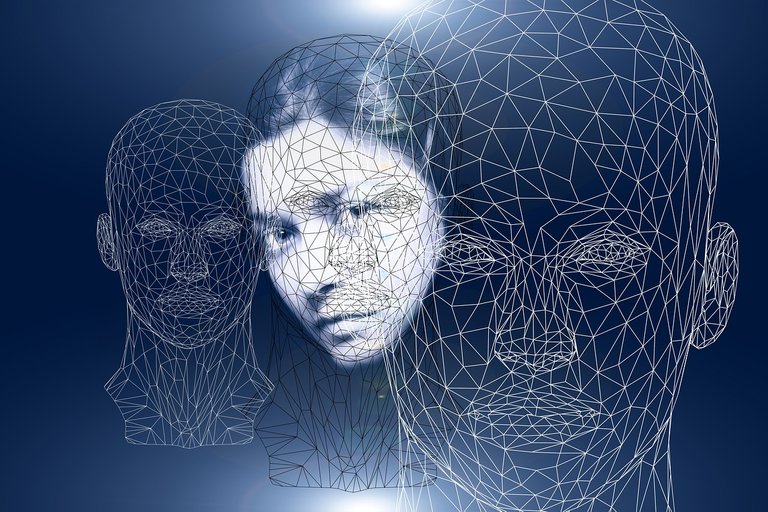Mind vs. Reality: My Astonishing discovery on Anosognosia
I came to know of some sort of a mysterious condition a couple of days ago, yeah fascinating and mysterious, I am quite surprised I am just getting to know about it now. I guess learning never ends. It might blow your and it of course, might probably not
Have you ever been in a situation where someone knew they were wrong, but they just couldn’t admit it? Or maybe-just-maybe you have been in a position and tried to convince someone of something, only for them to deny it despite the evidence? Well, you see as it turns out, there may be an actual neurological explanation behind this phenomenon!
I am not a major in psychology even though I have taken courses in it, but I have found myself extremely fascinated by this , how should I put it , Yes , mysterious condition known as Anosognosia. The term originates from the Greek words 'nosos' (disease) and 'gnosis' (knowledge), and is often referred to as the “mystery of self-unawareness.” This condition is characterized by an inability to recognize one’s own mental or physical impairment. Those who struggle with Anosognosia often remain unaware or deny their disability even when presented with clear evidence.
We are going to go on a probably bumpy ride, I'm going to take you through my own journey researching this fascinating condition and share what I learned along the way. So sit back, grab your favorite cup of tea, and let's dive into the deep end of Anosognosia together and of course it doesnt end with this post
What Is Anosognosia? The Condition of Not Knowing You Have a Disability
Anosognosia - not the easiest word of the English language to pronounce, but trust me when I say it’s worth learning. Also known as unawareness or denial of illness, it’s a condition of not knowing you have a disability - a total mystery to self-awareness.
I first became aquainted with this concept a couple of days ago and found it utterly fascinating. It's like your brain is playing hide and seek with itself, and the real kicker? The person affected doesn't even know there's a game going on. What an enigma!
It took me months to really understand the implications of anosognosia and its potential diagnoses in relation to neurological disorders. With some (not sure whether to call it hard work, cause it has been fun) anyways, hard-work, I managed to find enough details about the disorder for me to understand it better.
But even now, after my research, I'm still amazed at how much of an enigma anosognosia remains despite its increasing prevalence in medical diagnosis. It's truly no doubt one of those weird phenomena that will continue to confound us for years to come!
The Neurological Basis of Anosognosia: Damage to the Right Hemisphere
When I jumped on the bus researching anosognosia, I was keen on wanting to know the underlying cause of this mysterious disorder. At first, I made an assumption that it had something to do with cognitive-dissonance, or a "thinking-error". But more digging revealed that the blame lies squarely with the right hemisphere of the brain.
According to neurologists, damage to this part of our gray matter is usually to blame for anosognosia. The right hemisphere not only processes information differently from the left-side; it can create sensations, feelings disassociated from reality—like when you're dreaming and you think it's real but you wake up and realize that it wasn't!
Specifically, when the parietal-lobe of the right hemisphere and a structure called the insular-cortex don't communicate properly, anosognosia may occur. It's a bit like a faulty wiring system in your brain—it doesn't help that much to unplug and plug back in again! But somehow, this neurological miscommunication leads to self-unawareness (of paralysis or any other condition). So in a way, this disorder is really just a wiring problem!
Types of Anosognosia: Hemiplegia, Hemianopia, Aphasia
My journey to understanding anosognosia was filled with many surprises. I discovered, you seem, there are virtually several different types of anosognosia, each associated with a particular type of brain injury or stroke. Here they are:
Hemiplegia
Hemiplegia is caused by a stroke (or brain trauma) that damages the left or right side of the brain. These sufferers will often experience paralysis on one side of their body and can be completely unaware of said paralysis.
Hemianopia
Oooh yes!!! a rather particular type of anosognosia, affecting spatial awareness, known as hemianopia, which is a common stroke-related condition that occurs when the occipital lobes in the brain are damaged. This could cause an individual to have complete vision loss in either the left or right visual field—and they might not even know it!
Aphasia
You see, finally, or you might already know, aphasia is caused by a significant compromise to the language centers in the brain and can cause symptoms such as difficulty speaking, writing, reading and language understanding. But if one has a severe form of this type of anosognosia, it’s possible they won't even be aware that their language ability has been affected at all!
I already pretty much knew all of the above conditions as a physiotherapist, they are common presentations of cerebrovascular accidents(stroke) but you see what I didn't know was that they fell under anosognosia, now I know.
At this point, we draw a temporary curtain on anosognosia, and my research continues. I will fill you in, in subsequent posts, Thanks for reading, Sayonara, 🖐️

It is really a deadly disease because it easily affect the brain at the end of the day
Do you mean Donald Trump?
😂 Wow!
Thanks for your contribution to the STEMsocial community. Feel free to join us on discord to get to know the rest of us!
Please consider delegating to the @stemsocial account (85% of the curation rewards are returned).
You may also include @stemsocial as a beneficiary of the rewards of this post to get a stronger support.